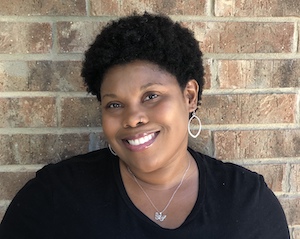

India spent years teaching teenagers and college-level students, and also worked as an Assistant Principal in Dallas—and she approved this lesson.
Stopwatch / timerIt includes materials, learning objectives and standards, activities and instructions, and student handouts. We also recommend tech tools that you can use to make the learning experience fun and interactive for your students.
When students enter the classroom or sign into class online, project the slide that asks the following questions. You can also use a collaborative tool like Padlet and post the question there:
What is a resume anyway? How are they used and why do they matter?
Invite students to share out. If you use Padlet, give students the opportunity to read each other’s responses before they share. If you’re teaching in person, you can cold call or ask for volunteers. Online, you can ask students to type in the chat box. As students are sharing, note patterns that come up in their responses.
Once several students share, emphasize that a resume is a document that helps potential employers understand who you are when applying for a job:
“You might think that your resume’s goal is to win you a great job. That’s true in the long-run. But in the hiring process, a resume’s greatest impact comes when you first apply for the job. That’s when a company decides whether you’ll be one of a very few applicants who are invited to a job interview.”
It’s important to format your resume in a way that allows recruiters and hiring managers to easily scan and identify your qualifications as they pertain to a specific job opportunity. They’re looking for one thing: how precisely your resume matches the requirements of the job they want to fill.
Recruiters spend an average of about six seconds reviewing a resume before making a decision to: a) continue reading, b) maybe save for later, or c) abandon and move on. And in some companies, the “person” measuring how well you match up isn’t a human at all! It’s a computer program on the lookout for key words and phrases.
Your resume needs to make a great first impression and fast. How can you write a resume that will help you get in the door? How do you get started?
Optional: You may want to show this video clip (5:54).
Understanding your audience jigsaw
Students will work together to prepare a resume based on a fictional profile.
Collaborate 3 students
Developing your resume content glow and grow
Students will practice writing Accomplishment Statements.
Collaborate Student pairs
Build your resume
Students will build their own resume based on common resume formats.
Collaborate Individual activity
No matter which activity you did, give students the opportunity to reflect and set a goal for their next steps. These self-assessments will also help you figure out what you need to do next to help them meet the learning objectives and grow stronger in resume-writing skills. Here are some suggestions:
You can use a tool like Mentimeter or Poll Everywhere to do a pulse check. Ask students on a scale of 1-5 (1 not confident, 5 ready to tailor their resume now), how prepared they feel to draft and tailor their resumes for potential employers. This information is also helpful for you, as you can use their responses to think about how much more guidance they need and whether or not you want to dig deeper into this skill.
Create a Google Form that gives students a place to reflect and set a goal. Here are some questions you might include:
Encourage students to continually assess their resumes, and adapt them as their goals change and as they gain experience. Remind them to consider format and content. Here are some questions they can ask themselves:
Career Readiness Toolkit for Teachers